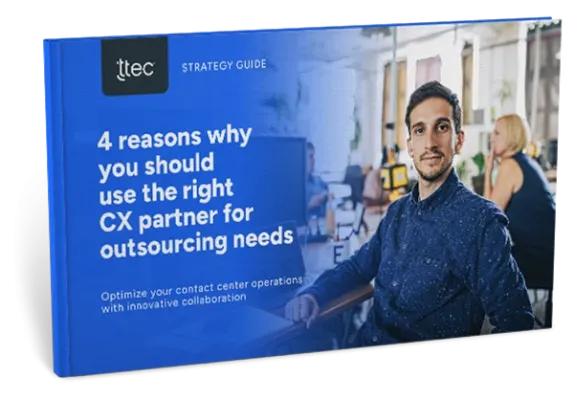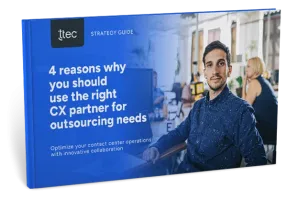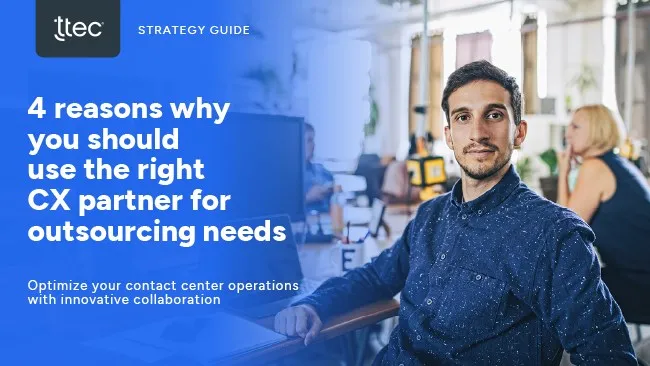We’ve all heard the saying. We’ve all used the saying. Sometimes it’s a fact of conducting business that—if a workflow or technology doesn’t need immediate replacement—there is likely another area of the department or organization that is more desperate for the budget. Because the squeaky wheel gets the oil, the trousers-on-fire initiatives will get desperation funds while those ancient workflows or technologies keep chugging along and patiently wait on the back burner.
Technologies, processes, and workflows are the enablers of great customer experiences. Just as easily, neglected technologies, processes, and workflows are the preventers of great customer experiences. Waiting for one of these to break in order to give it attention is a declaration that your business is reactive rather than proactive.
Complacency, indecision on approach, budget constraints, etc. all contribute to this reactive mindset leaking into the culture that hinders not just digitalization and modernization, but prohibits forward-thinking and productivity in the entire organization. It’s time to put an end to this detrimental mindset.
Here are the 10 most common mistakes/excuses that hold back CX strategies and how to break through them.
1. You’re defining “broke” wrong. Just because the IVR or any other technology is physically working, does not mean that it’s sufficient or hitting the mark. Blinking lights is not the inverse of broke. The technology may be physically on, but that doesn’t mean that the functionality still works for the customer experience. Do you think this approach is saving you money or allowing you to avoid costs? Dig into where your employees are spending their time & energy. These aged technologies might be costing you more than you think via years of nickel-and-diming your resources.
2. There will always be somewhere or something to pour budget into. “We wanted to implement that initiative, but something came up.” I can’t tell you how many times in my career I have heard some variation of that saying! If things are always ‘coming up’ and getting in the way of your crucial activities, then your vision and priorities aren’t clear. Planning activities are often rushed or deprioritized as we go from fighting one fire to the next. Without these guidelines of where the business unit or organization is going, it is easy to lose sight of what the real end goal is. Imagine building a house piecemeal and without blueprints. Most people can’t build a house without blueprints and the same goes for digital transformation and customer experience. Conducting road-mapping and prioritization exercises will paint a clear picture so that the most impactful initiatives are at the top of the budget list and those pesky other things that ‘just come up’ will have to wait if they don’t align to the main objectives.
3. You’re comfortable with “that’ll have to do.” The phrase itself indicates that status quo is okay. Here in 2019 and moving forward, nearly every industry is competing on customer experience more than price or any other factor. With that sort of competitive landscape, you can’t afford ‘good enough’ anymore when it comes to the customer experience or how you provide support to your customers. Expand the conversation on how you approach customer experience or contact center initiatives by looking at wider data around customer loyalty, churn, and renewal rates.
4. Employees are not providing innovative ideas. When you aren’t keeping your customer experience or employee experience up-to-date, your employees take note and position their behavior accordingly. When the organization doesn’t invest in the contact center or the tools employees need to support your customers—intentional or not—it sends the message that the organization is not devoted in a customer-focused culture. The culture you create influences everything from the tone of voice your employees use when corresponding to customers to whether they continue to grow their career at your organization.
Your employees are your frontline. They’re the ones talking to your customers, listening to your customers, logging feedback, hearing complaints, praise, and suggestions. A customer-first culture starts with empowered employees. Encourage your employees to come forward with ideas on how their jobs could be better, processes could be improved, or what they perceive are prime areas for innovation. This strengthens employee buy-in and helps focus efforts on key areas of the employee experience that can be improved.
5. You’re not articulating value appropriately. When you’re not communicating the value of a CX initiative or road-mapped solution, it is easy for the budget lords to pass it by. Falling back on dated strategy, workflows, and technologies because the value in investing in customer experience hasn’t been articulated, only further damages your business unit and organization. Do your homework and understand the value proposition of each component of your CX strategy that requires an investment.
6. Your VoC program is weak. Investing in a good Voice of the Customer program means that you will have the data you need to drive decisions with the customer’s voice. Complacency can become a lot easier to defeat if you are making a customer-driven decision that will drive increased customer satisfaction.
7. No one is paying attention to employee experience. Have you done a 360⁰ review of your associate experience lately? Don’t forget who is interfacing with the customers. It is crucial that the employee experience is enabling your people to deliver the best experience. If you have never measured employee experience before, two great places to start are an employee satisfaction survey or employee NPS survey.
8. You have an all-or-nothing mindset. Once again, this is where the strategic roadmap and prioritization exercises come into play. CX is not an all or nothing game. In fact, it is never an all game or a nothing game. Both of those approaches will cause far more problems than results.
9. You have the wrong people sitting at the table. Customer experience impacts every member of an organization, even if you are not directly responsible for the customer experience. Every last person at the organization holds a job that impacts the customer, and the customers are why the organization operates and how it affords to do so. Do your part to ensure that customer experience is being championed in your organization and that everyone knows how they can impact change and influence a customer-centric culture.
10. You’re focusing too much on the present day. The current state of affairs doesn’t reflect what can or will happen in the future, nor your preparation to take it on. Future-state planning is an incredibly important activity for the customer experience team to take part in. Is the organization positioning for growth or a new product launch? Then the customer experience and contact center team needs to be involved; the success of those initiatives will be largely impacted by the customer experience.
The first step to solving a problem is acknowledging the problem. And in an era of disruption, complacency is a problem. The sooner leaders act on this fact, the sooner the company will shift from being a target for disruption to the disrupter.














